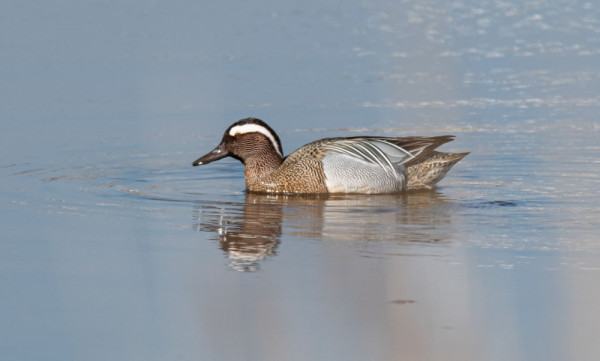
Migration blog (27th August – 2nd September)
Scott’s role includes the day-to-day running of BirdTrack: updating the application, assisting county recorders by checking records and corresponding with observers.
Relates to projects
The intensity of late summer migration has increased during the past week, with a prolonged period of north-northeasterlies providing many east coast birdwatchers with a feast of drift migrants. All along the east coast typical august migrants were in abundance with Pied Flycatchers, Redstarts, and Whinchats noted at several locations. Together with some of the commoner warblers such as Whitethroat and Willow Warbler were some scarce species and numerous Barred, Icterine and Greenish Warblers were noted as well as a few Melodious Warblers, some of which were found at locations in western and southern Britain. Many of these migrants will have come from Scandinavia, pushed across the North Sea by the prevailing winds, but it wasn’t just passerines that were seen in increasing numbers – waders and seabirds were also well reported. The first big wave of juvenile waders arrived a few weeks after the adults, which have passed through Britain and Ireland over the past few weeks. Curlew Sandpipers, Little Stint, Ruff, Spotted Redshank, Greenshank and Wood Sandpipers were well reported not only from east coast locations but right across Britain and Ireland.
Seabirds including Sooty and Balearic Shearwater and Arctic and Long-tailed Skua made it on to the lists of several sea watchers last week, with the odd Sabine’s Gull and Storm Petrel also seen from a few sites.
Black Tern reports, although below the BirdTrack historical average for the time of year, increased as individuals were seen at sites right across Britain and Ireland, with several reported during sea watches.

Species focus — Garganey
Garganey is the only wildfowl species that is a summer visitor to Britain and Ireland, with the estimated breeding population somewhere between 15-125 pairs. Not only is Garganey difficult to monitor during the breeding season due to its very secretive nature, numbers also fluctuate between years, dependent on a variety of conditions. Pairs also form mainly at the wintering locations with birds migrating north together, so a pair at a site during the early spring may not necessarily constitute a breeding record.
Most breeding Garganey are, rather unsurprisingly, found in southern and eastern Britain, where they favour reedy, marshy wetlands. The Ouse Washes are the breeding stronghold.
Garganey begin to move south during late summer and autumn and can turn up on any waterbody at this time of the year. Outside of Europe, British- and Irish-ringed Garganey have been found in the Russian Federation, Kazakhstan, Morocco, Algeria and Mali.
Garganey winters in the northern Tropics and during the winter months is the commonest Palearctic duck in Senegal and the Gambia, with up to 93,000 occurring in some winters.
Given the wind direction east coast locations will get the bulk of any species that arrive.

Looking ahead
Much like the past few days, high pressure looks to be set across Britain and Ireland with little change expected during the coming week. This will continue the settled conditions with little rain forecast for most parts and a steady north to northeasterly airflow will remain in place. These conditions will suit many migrants, as it will provide a stable tail wind to help them on their migration and will bring a flow of drift migrants from Scandinavia and the near continent across the North Sea to Britain and Ireland. Given the wind direction, east coast locations will get the bulk of any species that arrive, but given the settled conditions they may only linger a couple of days before heading off. This could lead to birds filtering through the country and turning up inland and further west and south. The range of species likely to arrive in the coming week is much like those reported last week, with Pied and Spotted Flycatchers, Redstart, Wheatear, Whinchat, and common warblers such as Whitethroat, Lesser Whitethroat, Blackcap, Garden Warbler, Chiffchaff, and Willow Warbler being the most abundant. Within these will be the occasional Wryneck, Red-backed Shrike, Greenish, Icterine and Barred Warbler, and maybe something rarer such as Lesser Grey Shrike, Western Bonelli’s Warbler or Eastern Olivaceous Warbler.
Seabird passage is likely to continue apace, given the direction of the wind, and yet more Sooty Shearwater, Skuas, Little Gulls, Terns, and Fulmars will be on the move. Inevtiably, the odd rarity such as a Fea’s Type Petrel may also be seen.
Waders passing through will include those already mentioned from the past week as well as Sanderling, Turnstone, Snipe and increasing numbers of Grey and Golden Plover, some of which could still be in breeding plumage. Given the lack of any westerly winds it is unlikely that many American waders will appear but this is a good time of year for Stilt Sandpiper, Lesser Yellowlegs, and Long-billed Dowitcher.








Share this page